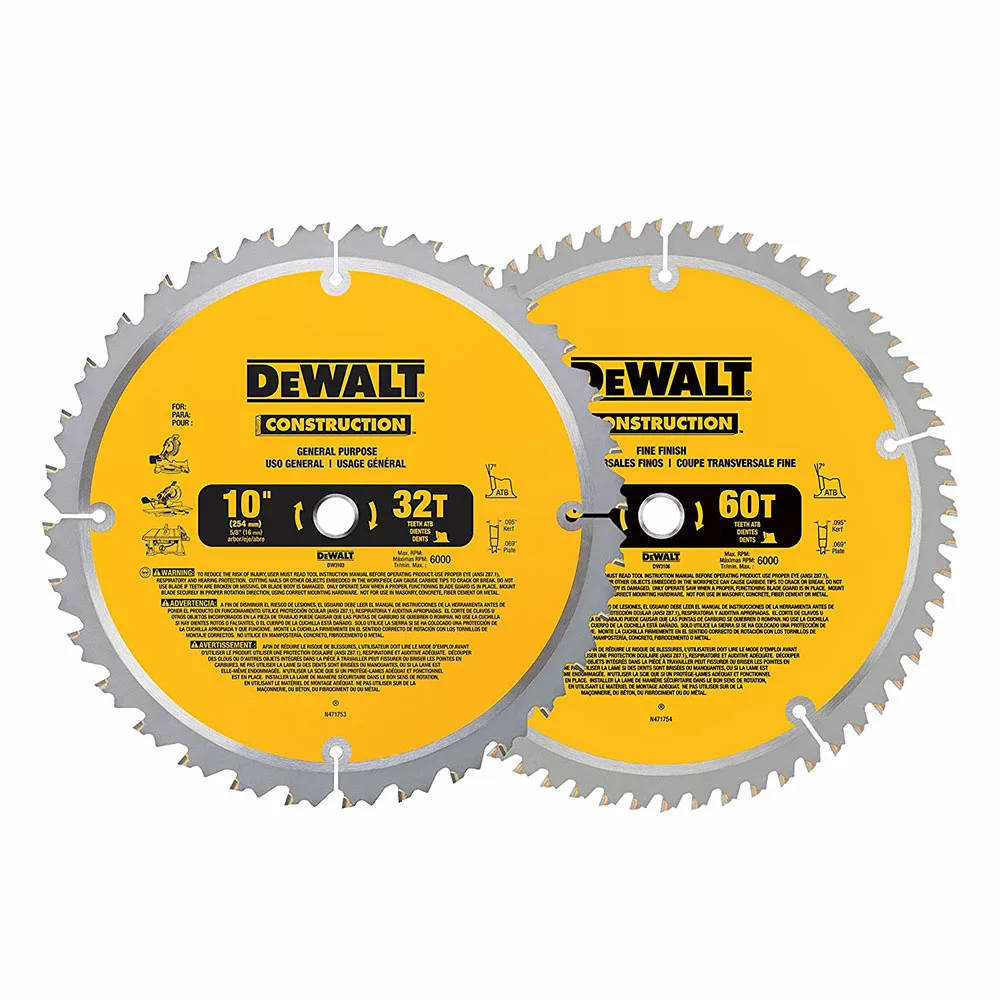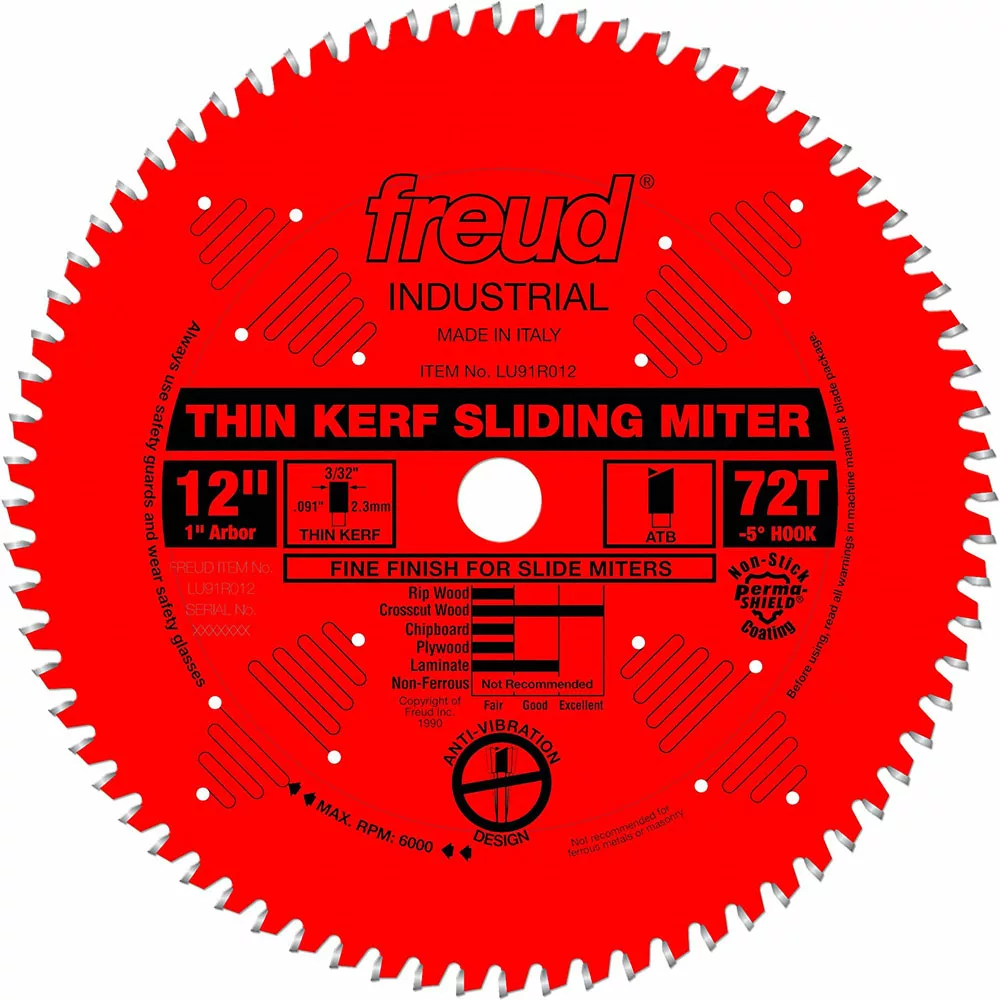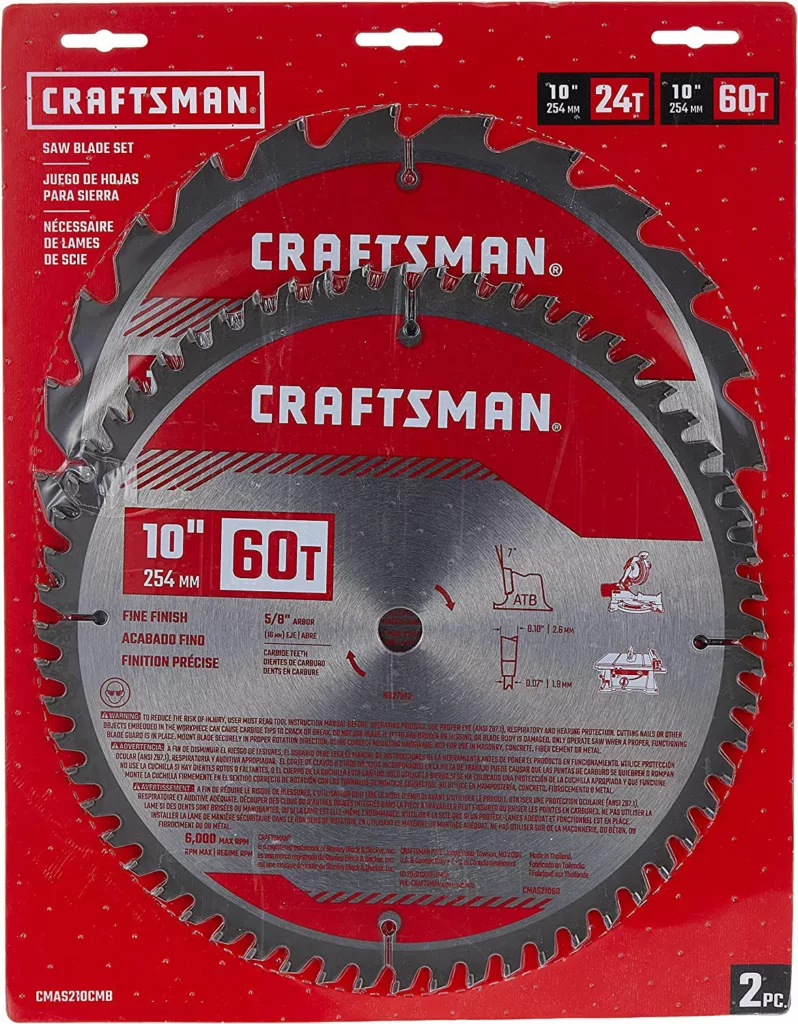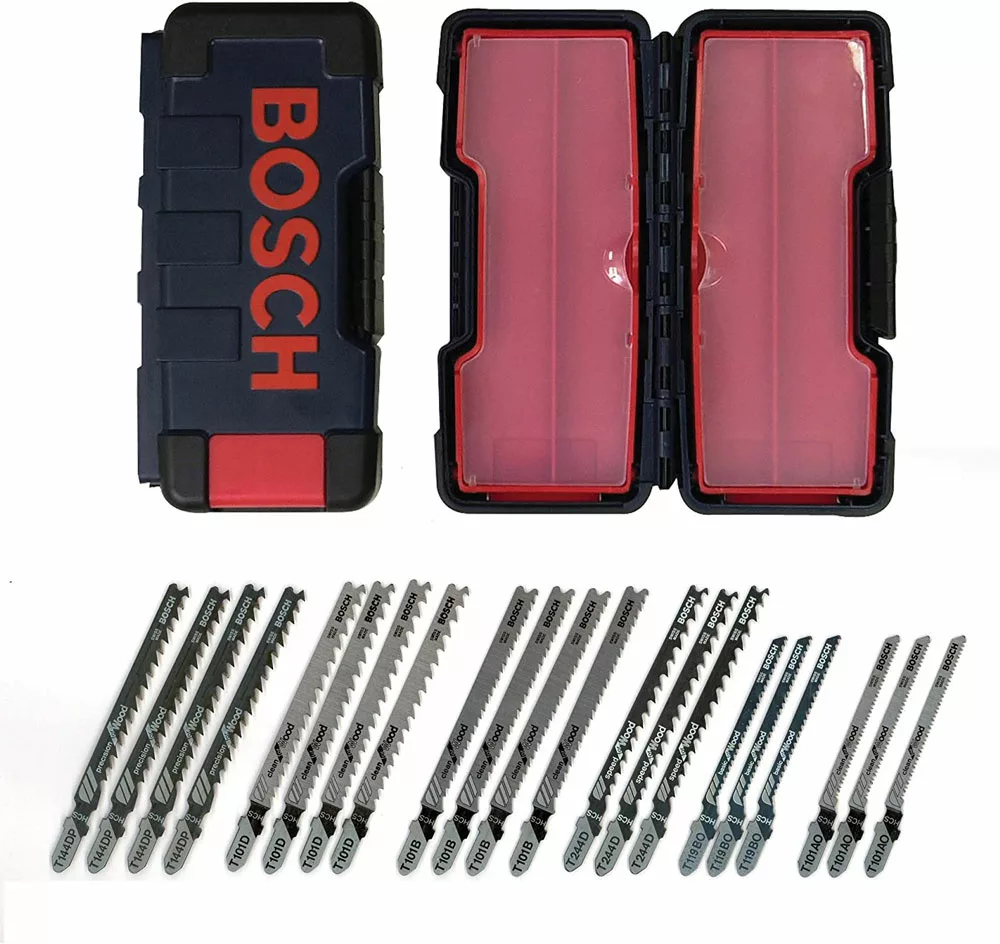Installing vinyl plank flooring is an easy and cost-effective way to update your home.
But to ensure you get the best results, you must use the right tools – including the best saw blade for cutting vinyl plank flooring.
Yet, with numerous options available, reviewing each saw blade’s features and benefits before purchasing is prudent.
Thankfully, this guide will explain the different types of saw blades available, how to grab the right one for your project, and how to use the blades safely and effectively.
Factors to Consider When Choosing Saw Blades for Vinyl Plank Flooring
Type
Miter Saws
When cutting through vinyl plank flooring, choose a crosscutting blade with a carbide-tipped tooth for your miter saw.
For your information, this type of blade will cut through vinyl planks cleanly and help ensure that your cuts are accurate.
Of course, consider a blade with a higher tooth count as well – if you want to reduce the chipping of the vinyl planks.
Circular Saws
For a circular saw, opt for blades with a high tooth count and a special coating. It helps reduce friction and heat buildup, which can help prevent chipping and cracking.
Furthermore, choose a blade with the right size and number of teeth for the job. For instance, larger blades with more teeth will cut through thicker planks, while smaller blades with fewer teeth excel at cutting through thinner planks.
Jigsaws
When picking out a jigsaw blade, you want to go for one with fine teeth – they’ll make tight turns and give you a precise cut. Don’t forget to get the right size blade for your jigsaw!
Rotary Tools
There are blades designed for rotary tools. Such blades slice through vinyl like butter and can make precise cuts without much effort.
Plus, the blades come in different sizes so that you can pick the perfect one for your project.
Just note that rotary tools won’t work for big jobs with laminate flooring since they don’t have enough power!
Saw Compatibility
Ensure the saw blade you choose is compatible with the saw you plan to use. Otherwise, the blade could break while in action and send pieces flying everywhere.
Always check the size, and make sure it fits securely and is safe for use. Nevertheless, note that you can interchange miter saw and circular saw blades.
Blade Diameter and Kerf
The diameter of the blade should be large enough to cut through the thickness of the vinyl plank flooring – but not so large that it causes excessive vibration.
In the same vein, you need to consider the kerf or thickness of the blade. Ideally, a blade with a thin kerf will make a cleaner cut in the vinyl plank flooring, but it may also cause excessive wear.
Ultimately, the best way to find the perfect combination of diameter and kerf is to experiment with different blades until you find one that works best for your project.
Number of Teeth
Ideally, if you’re cutting vinyl planks, you’ll probably want a saw blade with up to 100 teeth to get a clean cut and reduce dust.
However, if you’re cutting thicker planks, you may need a blade with more teeth, up to 140, to ensure your cut is nice and smooth!
Arbor Size
To ensure a good fit (and accurate cuts), double-check the arbor size of the blade and the saw before purchasing. The blade’s arbor size must match the saw’s arbor size.
In other words, if you’re using a 7-1/4-inch saw blade, grab a blade with a 7-1/4-inch arbor size.
Here are different blade sizes with their respective arbor hole sizes.
- 3-inch blades: ¼-inch arbor holes
- 6-inch blades: ½-inch arbor holes
- 7¼-inch to 10-inch blades: ⅝-inch arbor holes
- 12-inch to 16-inch blades: 1-inch arbor holes
Material Thickness
Thinner materials, such as vinyl planks, require a blade with fewer teeth and a smaller kerf width. Of course, that will allow for cleaner and more precise cuts. On the other hand, thicker materials, such as laminate, will require a blade with more teeth and a larger kerf width to make deep cuts.
Best Saw Blades for Vinyl Plank Flooring
1. OVERPEAK Circular Saw Blade

Advantages & Disadvantages
- Firstly, it works with different saws, including circular, table, and miter saws.
- Secondly, it’s quiet and won’t compromise your peace.
- Plus, it’s sturdy and long-lasting, saving regular store trips.
- Again, it has a 10-inch blade with special teeth that give clean cuts.
- However, this blade doesn’t come with any warranty.
Customer Reviews
“It cuts great and doesn’t cause splintering in wood.”
2. DEWALT Miter & Table Saw Blades

Advantages & Disadvantages
- Firstly, it stays sharp longer, and you won’t need to hone it often.
- Likewise, it’s compatible with other saws – you don’t have to buy separate blades for other saws.
- Moreover, it makes cuts quickly and generates smooth finishes.
- Also, it’s lightweight and stress-free to use for extended periods.
- Conversely, it has a higher price tag and may not be suitable if you’re on a budget.
Customer Reviews
“These are good quality blades.”
3. Freud Sliding Miter Saw Blade

Advantages & Disadvantages
- Firstly, it gives you lots of options for size.
- Additionally, it has a non-stick coating and won’t rust.
- Next, it’s way more efficient than other saw blades – it uses less power to run.
- Plus, it gives you better control with the special hook angles.
- Notwithstanding, it might deflect when cutting through the tough stuff.
Customer Reviews
“I liked the clean cut it produced.”
4. CRAFTSMAN Miter Saw Blade

Advantages & Disadvantages
- Firstly, it is speedy and produces clean cuts.
- Then, it’s heat-treated and won’t warp.
- Besides, it’s rust-proof and can last a long time.
- Furthermore, you can get a refund or exchange if you’re unhappy with your purchase.
- Regardless, using the thing for long periods can be heavy and tiring.
Customer Reviews
“It was nice to see something affordable amid all these rising price tags.”
5. BOSCH Jigsaw Blade

Advantages & Disadvantages
- Firstly, the thin blade kerf of this product reduces the heat generated right in action.
- Secondly, it has a progressive tooth design for great results.
- Thirdly, it comes in different sizes for your pick.
- Also, it’s lightweight and easy to handle.
- Nevertheless, it won’t cut through ceramic tiles.
Customer Reviews
“The case is well built and properly hinged, and the latch is mechanical, not just flexing plastic. So, the case should last a long time.”
Which Tool Is Best for the Cutting of Vinyl Planks?
Using Utility Knife
A utility knife has a sharp blade to make precise cuts, and it’s easy to move around tight corners. On the contrary, if you want straight cuts, it’s best to use a ruler or straight edge to guide it.
Using Tile Cutter
A tile cutter can help you get exact cuts with little effort, which is helpful when trying to trim vinyl planks to fit around obstacles like doors, corners, and cabinets. Just beware that you should only use it on vinyl planks thinner than 0.5mm – for anything thicker than that, use a circular saw or jigsaw.
Using Table Saw
A table saw makes precise, straight cuts with vinyl planks. Plus, it’s great for cutting through thicker material than other saws, which is ideal for thicker vinyl planks.
However, with this tool, you want to use the right blade for cutting vinyl.
Using Hand Saw
With a hand saw, you won’t risk damaging your vinyl plank flooring as you might with power tools. Moreover, a hand saw can make straight, angled, and circular cuts hassle-free.
Using Jigsaw
A jigsaw is great for cutting flooring that needs to fit around tricky obstacles, like door frames or stairs. It can make very accurate cuts and angles. Furthermore, a jigsaw is much safer than using other tools, like circular or table saws.
Using Miter Saw
A miter saw is a no-bummer when you must make angled cuts or cut multiple pieces of vinyl plank flooring to the same length. For example, if you’re trying to make a perfect fit around an angled corner, a miter saw won’t disappoint. On the same note, if you have pieces that need to be the same size, you can use the miter saw for quick and accurate cuts.
Using Circular Saw
A circular saw can cut through vinyl quickly and accurately. Plus, this saw can make long and straight cuts effortlessly, which is great for installing a vinyl plank floor.
UBest Saw Blade for Cutting Vinyl Plank Flooring: sing Dremel
Generally, a Dremel is great for making small, precise cuts. In other words, it’s perfect for cutting around door frames or other obstacles and is great for cutting intricate patterns or shapes into vinyl planks.
On the other hand, if you need to make big cuts, probably when installing a new floor or trimming planks to fit a room, you might want to go with a power saw.
Best Saw Blade for Cutting Vinyl Plank Flooring: Using Vinyl Cutter
If you install vinyl plank flooring in an oddly-shaped room, a vinyl cutter won’t disappoint. For your information, it’ll give you the precision you need to get a perfect fit and create a custom look.
Of course, that’s perfect for those tricky curved walls, angles, or tight corners.
How to Cut Vinyl Flooring Planks
1. Gather the necessary tools: pencil, measuring tape, straight edge, utility knife, and a saw.
2. Measure the length and width of the space you need to fill.
3. Mark of the measurements on the back of a vinyl flooring plank with a pencil.
4. Place a straight edge along the marked line and score the plank with a utility knife.
5. Place the plank on a saw and cut along the scored line.
6. Repeat steps 3-5 for the remaining planks.
7. Install the planks in the desired area.
Conclusion
With the right knowledge and careful consideration of your specific needs, you can make an informed decision that will provide you with the best saw blade for vinyl plank flooring.
For more information, contact us today.
